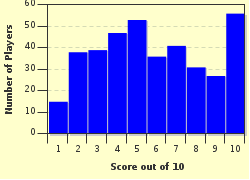Quiz Answer Key and Fun Facts
1. A Pensioner at the start of his career, this England international moved north to spend four years as a Red Devil. A spell as a Red and Black in Italy was followed by a Red and Blue year in Paris. A return to the UK came at the age of 30 as a Ger before, and after 10 years away, he returned to his native city as a Super Hoop. After five years, he became a player-coach for the Eagles, but played just one game before becoming a Super Hoop for a second time. His last season as a player saw him as a Chairboy, a Cabbage, a Lion, and an O. Which England international was this?
2. An early impact as a Hornet led to a big money move to some northern Reds where glory soon came. After 10 years as a Red, he moved on to become a Magpie before one last season as an Addick and then retirement. Who was this former Footballer of the Year?
3. Having spent five years with some non-league stones, a move to the Sky Blues saw this player experience top flight football for the first time. Two years later he became a Tricky Tree and earned legendary status. Relegation as player-manager ended a 12-year stay and he moved north to become a Magpie. His playing career ended with two years as an Iron and one last promotion-winning campaign as a citizen. Who was this England international defender?
4. He came through the youth ranks as a Lillywhite and stayed for 12 years before the lure of a Red and White existence in the south of France won him over. After injury curtailed his career in France, he returned to England to take up a post as a player-manager for the Robins. After guiding them to the top flight for the first time in their history, he left to become a Pensioner where he made his last playing appearances. Who was this England international midfielder?
5. A long career began as a Fox and ended more than 1000 league appearances later as an O. In-between he played as a Potter, a championship-winning Tricky Tree, a Saint, a Ram, and a Pilgrim. The search for the 1000th appearance saw spells at the Dons, the Trotters, the Sky Blues, and the Irons but yielded just one appearance. Who was this record-breaking international whose career spanned more than 30 years?
6. Two long spells as a Red Devil were separated by periods spent in Spain as a Red and Blue and in Germany as a Bavarian. At the age of 32 he became a Pensioner. Further spells as a Saint and a Toffee followed before his career came to an end as a Rover. Who was this international striker?
7. This much traveled striker began his career as a Cumbrian before a spell playing in Canada with some Whitecaps. A period with the Red Devils failed to produce a single league appearance before a move to his home town Magpies made his name. A big money move to the Reds brought him his first silverware. His four years as a Red ended with a move across the city to the Toffees. He returned to the Magpies at the age of 32 and played there for four seasons before moving to the Trotters. After their relegation, he became a footballing nomad, playing for the Citizens, the Cottagers, and the Monkey Hangers before ending his playing days as an Australian Knight. Who was this player who also won 59 caps for England?
8. This England international famously worked in a sausage factory before his hometown Magpies gave him a chance to make a living as a footballer. His performances there soon earned him a move to some Lillywhites. His greatest career successes came with as a French Olympian, before a return to England as an Owl. After four years he was released and spent brief spells as a Bairn, a Bantam, a Black Cat, a player-managing Claret and finally a Gull before retiring from the professional game. Who was he?
9. He began his career as a Lillywhite, but after just a single game he was loaned out to some North American Olympians. A return to England saw a debut for Boro where his star rose. A move to some championship-winning Reds saw the most successful seven years of his career. He traded red to become a Blue-ringed Italian before returning to his home country as a Ger to end his playing days. Which title-winning captain was he?
10. Having started his career in the lower divisions of the Football League as a Seal, this star striker earned a move to some Reds, where he enjoyed a long period of success. After seven years as a Red, he left to join an Italian Old Lady, but the relationship didn't work and he became a Red again a year later. A further eight year spell ended with a move to the Mighty Whites, before a year as a Magpie, a loan spell as a Blade (loan), a year as a Red Dragon, and a final year with some Australian Olympians brought his playing days to an end. Who was this star striker?
Source: Author
Snowman
This quiz was reviewed by FunTrivia editor
Nightmare before going online.
Any errors found in FunTrivia content are routinely corrected through our feedback system.

